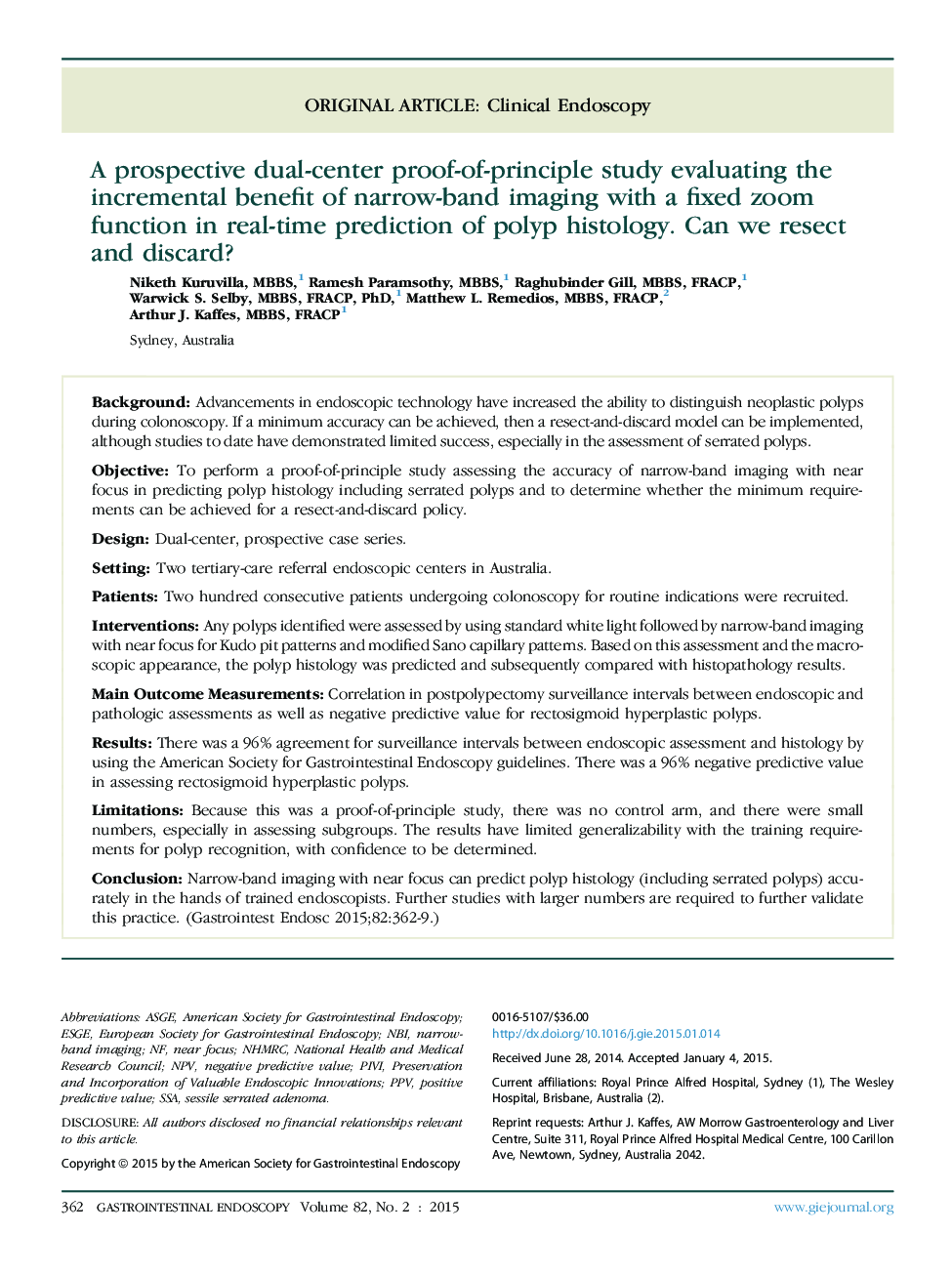| کد مقاله | کد نشریه | سال انتشار | مقاله انگلیسی | نسخه تمام متن |
|---|---|---|---|---|
| 6097738 | 1210292 | 2015 | 8 صفحه PDF | دانلود رایگان |

BackgroundAdvancements in endoscopic technology have increased the ability to distinguish neoplastic polyps during colonoscopy. If a minimum accuracy can be achieved, then a resect-and-discard model can be implemented, although studies to date have demonstrated limited success, especially in the assessment of serrated polyps.ObjectiveTo perform a proof-of-principle study assessing the accuracy of narrow-band imaging with near focus in predicting polyp histology including serrated polyps and to determine whether the minimum requirements can be achieved for a resect-and-discard policy.DesignDual-center, prospective case series.SettingTwo tertiary-care referral endoscopic centers in Australia.PatientsTwo hundred consecutive patients undergoing colonoscopy for routine indications were recruited.InterventionsAny polyps identified were assessed by using standard white light followed by narrow-band imaging with near focus for Kudo pit patterns and modified Sano capillary patterns. Based on this assessment and the macroscopic appearance, the polyp histology was predicted and subsequently compared with histopathology results.Main Outcome MeasurementsCorrelation in postpolypectomy surveillance intervals between endoscopic and pathologic assessments as well as negative predictive value for rectosigmoid hyperplastic polyps.ResultsThere was a 96% agreement for surveillance intervals between endoscopic assessment and histology by using the American Society for Gastrointestinal Endoscopy guidelines. There was a 96% negative predictive value in assessing rectosigmoid hyperplastic polyps.LimitationsBecause this was a proof-of-principle study, there was no control arm, and there were small numbers, especially in assessing subgroups. The results have limited generalizability with the training requirements for polyp recognition, with confidence to be determined.ConclusionNarrow-band imaging with near focus can predict polyp histology (including serrated polyps) accurately in the hands of trained endoscopists. Further studies with larger numbers are required to further validate this practice.
Journal: Gastrointestinal Endoscopy - Volume 82, Issue 2, August 2015, Pages 362-369